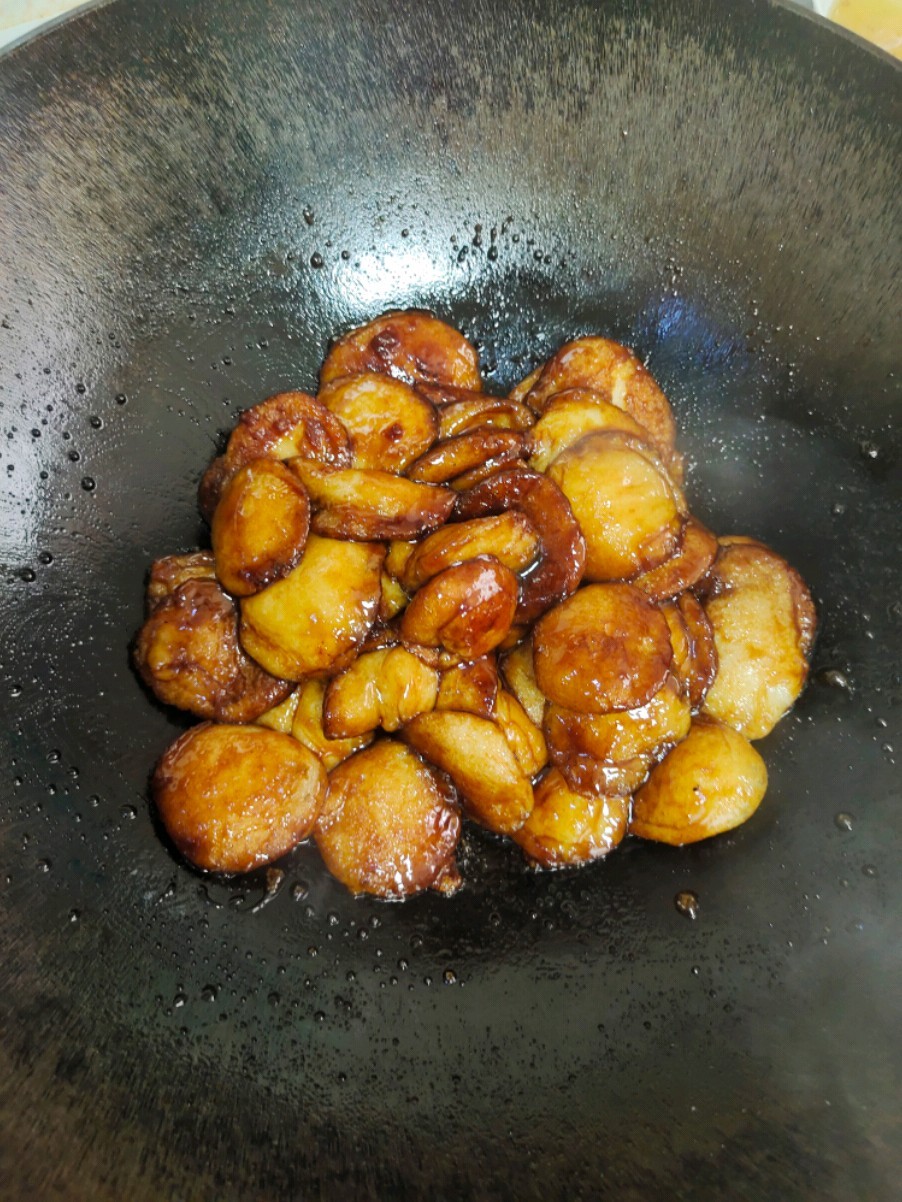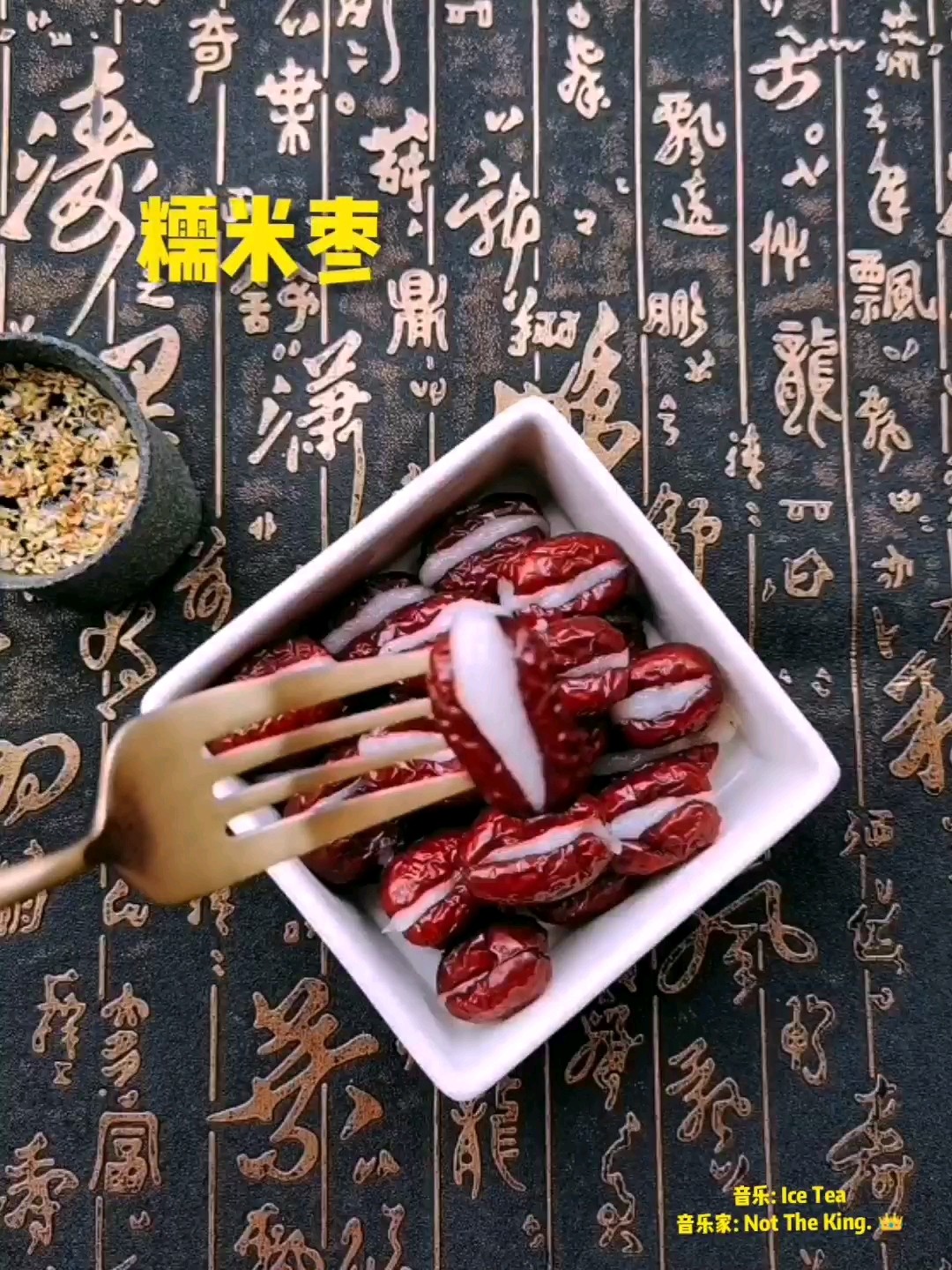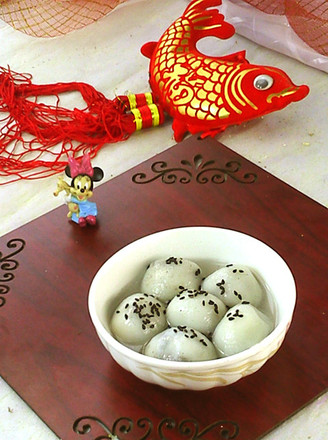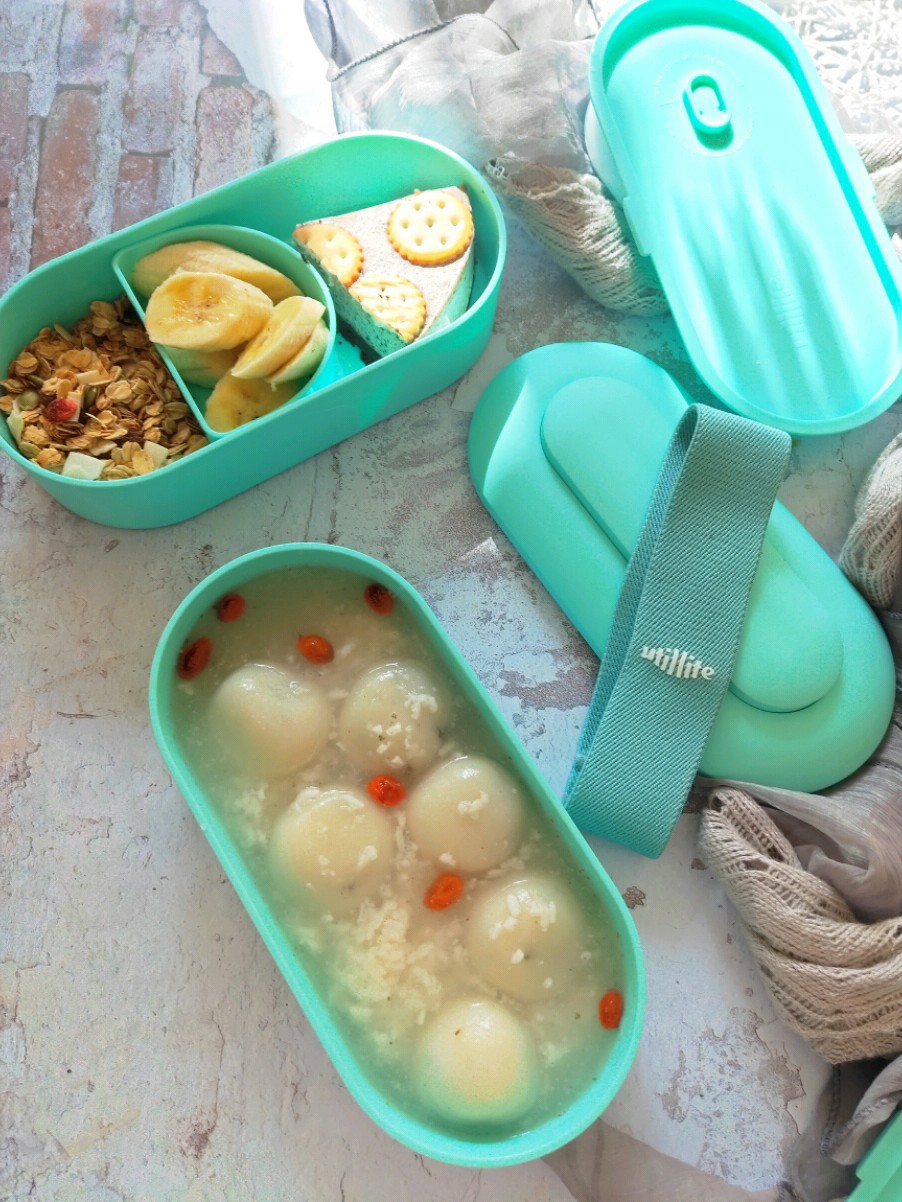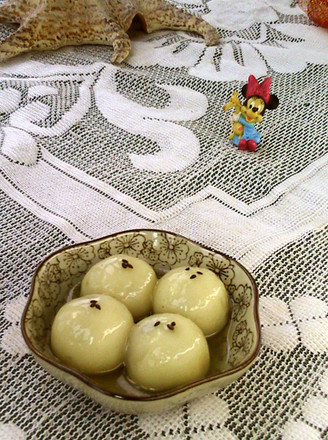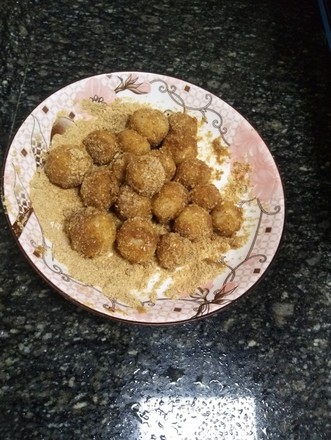[make You Unforgettable Glutinous Rice Balls] Colorful White Fungus and Fruit Glutinous Rice Balls
by Star Chef House
Favorite
Difficulty
Normal
Time
30m
Serving
2
The Lantern Festival on the 15th day of the first month of the lunar calendar, also known as "the Lantern Festival" (the Lantern Festival), is the traditional Chinese Han folk festival. The first month is the first month of the lunar calendar. The ancients called the night "xiao", and the 15th is the first full moon night of the year, so the 15th of the first month is called the Lantern Festival. Also known as the Little New Year, Yuan Xi or Lantern Festival, it is the first important festival after the Spring Festival. China has a vast territory and a long history, so the customs of the Lantern Festival are not the same across the country. Among them, eating Lantern Festival, admiring lanterns, dragon dance, lion dance, etc. are several important folk customs of Lantern Festival.
This kind of food was first called "Floating Yuanzi" and later "Yuanxiao", and businessmen also called it "Yuanbao." The Lantern Festival is the "tangyuan" filled with sugar, rose, sesame, red bean paste, cinnamon, walnut kernel, nuts, jujube puree, etc., wrapped in glutinous rice flour into a round shape, which can be meat or vegetable, and has different flavors. It can be cooked in soup, deep-fried, and steamed, which means a happy reunion. The glutinous rice balls in Shaanxi are not packaged, but are "rolled" in glutinous rice flour, boiled or fried, heated and heated, and round. At the same time, they should also eat some seasonal foods, such as rice porridge or bean porridge with meat and poop soup in the Southern and Northern Dynasties. But this food is mainly used for sacrificial offerings, not to mention it is a festival food. It was only in the Tang Dynasty Zheng Wangzhi's "Lu Fu Lu" that it was recorded: "Bianzhong diet, Shangyuanyou hammer". The method of making the oil hammer is similar to the deep-fried Lantern Festival of later generations, according to a "Shang Shi Ling" in the "Taiping Guang Ji" quoted in "Lu's Miscellaneous Notes". Some people call it "Pearl of Oil Painting". Lantern Festival The Tang Dynasty’s Lantern Festival diet is noodle silkworm. Wang Renyu (880-956)’s "Remains of Kaiyuan Tianbao" records: "Every year in the Yuan Dynasty, the custom of artificial silkworms was still left in the Song Dynasty, but different seasonal foods are more abundant than those in the Tang Dynasty. ". Lu Yuanming’s "Sui Shi Za Ji" mentioned: "Beijing people use mung bean flour as a soup, boiled glutinous for pills, and sugar for glutinous rice, which is called Yuanzi salted black bean soup. Niantou mixed meat soup is called salted black bean soup. It's like making silkworms every day, everyone goes on a diet." In the Southern Song Dynasty, the so-called "lactose yuanzi" appeared, which should be the predecessor of glutinous rice balls. At least in the Ming Dynasty, people called this kind of glutinous rice dumplings as'Yuanxiao'. Liu Ruoyu (born 1541)’s Zhuozhongzhi recorded the method of Lantern Festival: “The preparation method uses fine glutinous rice noodles with walnut kernels, sugar, and roses as fillings, sprinkled with water, and rolls into the shape of a walnut. This is what Jiangnan calls glutinous rice balls". During the Kangxi period of the Qing Dynasty, the "Eight Treasure Lantern Festival" specially made by the imperial dining room was a delicacy well-known in the courts and the wild. Ma Siyuan was a master of Lantern Festival in Beijing at that time. The dripping powder Lantern Festival he made is well-known far and wide. Fu Zeng (born 1688)'s "Shangyuan Zhuzhi Ci" said: "Osmanthus-fragrant stuffed with walnuts, Jiangmi is like a pearl in the water. It is said that Ma's powder is good, and the lanterns are sold in the wind." The poem chanted is the famous Majia Lantern Festival. For nearly a thousand years, the making of Lantern Festival has been exquisite. As far as the noodles are concerned, there are rice noodles, sticky sorghum noodles, yellow rice noodles and scallop noodles. The content of the filling is sweet, salty, meat and vegetable, and everything is available. The sweet ones are so-called osmanthus sugar, hawthorn sugar, assorted meat, bean paste, sesame, peanuts and so on. The salty ones are stuffed with pork and lard, which can be used for deep-fried and stir-fried Yuanxiao. There are five-xin Yuanxiao composed of mustard, garlic, leeks, and ginger, which means diligence, long-term, and upward. The method of production also varies from north to south. For the Lantern Festival in the north, rolling by hand is often used, while the dumpling in the south is usually kneaded with the palm of your hand. The Lantern Festival can be as big as walnuts or as small as soybeans. The cooking methods include soup, stir-fry, simmering in oil, and steaming. It is equally delicious with or without fillings. At present, the Lantern Festival has become a dim sum snack prepared at all times, and you can have a bowl to relieve your hunger at any time.
Today I will introduce to you the fruit dumplings I made. I hope you will like it."
This kind of food was first called "Floating Yuanzi" and later "Yuanxiao", and businessmen also called it "Yuanbao." The Lantern Festival is the "tangyuan" filled with sugar, rose, sesame, red bean paste, cinnamon, walnut kernel, nuts, jujube puree, etc., wrapped in glutinous rice flour into a round shape, which can be meat or vegetable, and has different flavors. It can be cooked in soup, deep-fried, and steamed, which means a happy reunion. The glutinous rice balls in Shaanxi are not packaged, but are "rolled" in glutinous rice flour, boiled or fried, heated and heated, and round. At the same time, they should also eat some seasonal foods, such as rice porridge or bean porridge with meat and poop soup in the Southern and Northern Dynasties. But this food is mainly used for sacrificial offerings, not to mention it is a festival food. It was only in the Tang Dynasty Zheng Wangzhi's "Lu Fu Lu" that it was recorded: "Bianzhong diet, Shangyuanyou hammer". The method of making the oil hammer is similar to the deep-fried Lantern Festival of later generations, according to a "Shang Shi Ling" in the "Taiping Guang Ji" quoted in "Lu's Miscellaneous Notes". Some people call it "Pearl of Oil Painting". Lantern Festival The Tang Dynasty’s Lantern Festival diet is noodle silkworm. Wang Renyu (880-956)’s "Remains of Kaiyuan Tianbao" records: "Every year in the Yuan Dynasty, the custom of artificial silkworms was still left in the Song Dynasty, but different seasonal foods are more abundant than those in the Tang Dynasty. ". Lu Yuanming’s "Sui Shi Za Ji" mentioned: "Beijing people use mung bean flour as a soup, boiled glutinous for pills, and sugar for glutinous rice, which is called Yuanzi salted black bean soup. Niantou mixed meat soup is called salted black bean soup. It's like making silkworms every day, everyone goes on a diet." In the Southern Song Dynasty, the so-called "lactose yuanzi" appeared, which should be the predecessor of glutinous rice balls. At least in the Ming Dynasty, people called this kind of glutinous rice dumplings as'Yuanxiao'. Liu Ruoyu (born 1541)’s Zhuozhongzhi recorded the method of Lantern Festival: “The preparation method uses fine glutinous rice noodles with walnut kernels, sugar, and roses as fillings, sprinkled with water, and rolls into the shape of a walnut. This is what Jiangnan calls glutinous rice balls". During the Kangxi period of the Qing Dynasty, the "Eight Treasure Lantern Festival" specially made by the imperial dining room was a delicacy well-known in the courts and the wild. Ma Siyuan was a master of Lantern Festival in Beijing at that time. The dripping powder Lantern Festival he made is well-known far and wide. Fu Zeng (born 1688)'s "Shangyuan Zhuzhi Ci" said: "Osmanthus-fragrant stuffed with walnuts, Jiangmi is like a pearl in the water. It is said that Ma's powder is good, and the lanterns are sold in the wind." The poem chanted is the famous Majia Lantern Festival. For nearly a thousand years, the making of Lantern Festival has been exquisite. As far as the noodles are concerned, there are rice noodles, sticky sorghum noodles, yellow rice noodles and scallop noodles. The content of the filling is sweet, salty, meat and vegetable, and everything is available. The sweet ones are so-called osmanthus sugar, hawthorn sugar, assorted meat, bean paste, sesame, peanuts and so on. The salty ones are stuffed with pork and lard, which can be used for deep-fried and stir-fried Yuanxiao. There are five-xin Yuanxiao composed of mustard, garlic, leeks, and ginger, which means diligence, long-term, and upward. The method of production also varies from north to south. For the Lantern Festival in the north, rolling by hand is often used, while the dumpling in the south is usually kneaded with the palm of your hand. The Lantern Festival can be as big as walnuts or as small as soybeans. The cooking methods include soup, stir-fry, simmering in oil, and steaming. It is equally delicious with or without fillings. At present, the Lantern Festival has become a dim sum snack prepared at all times, and you can have a bowl to relieve your hunger at any time.
Today I will introduce to you the fruit dumplings I made. I hope you will like it."

![[make You Unforgettable Glutinous Rice Balls] Colorful White Fungus and Fruit Glutinous Rice Balls [make You Unforgettable Glutinous Rice Balls] Colorful White Fungus and Fruit Glutinous Rice Balls](https://img.simplechinesefood.com/4f/4f0afc3e97e1cca66aa5956eed55d44d.jpg)
![[make You Unforgettable Glutinous Rice Balls] Colorful White Fungus and Fruit Glutinous Rice Balls recipe [make You Unforgettable Glutinous Rice Balls] Colorful White Fungus and Fruit Glutinous Rice Balls recipe](https://img.simplechinesefood.com/ef/ef7d0302229ddcf485acc2e0b6a4b627.jpg)
![[make You Unforgettable Glutinous Rice Balls] Colorful White Fungus and Fruit Glutinous Rice Balls recipe [make You Unforgettable Glutinous Rice Balls] Colorful White Fungus and Fruit Glutinous Rice Balls recipe](https://img.simplechinesefood.com/73/7352ef24adc4d67b5bd0e3039728f7cf.jpg)
![[make You Unforgettable Glutinous Rice Balls] Colorful White Fungus and Fruit Glutinous Rice Balls recipe [make You Unforgettable Glutinous Rice Balls] Colorful White Fungus and Fruit Glutinous Rice Balls recipe](https://img.simplechinesefood.com/05/053652aba0f66c9d41542a312fc85f7f.jpg)
![[make You Unforgettable Glutinous Rice Balls] Colorful White Fungus and Fruit Glutinous Rice Balls recipe [make You Unforgettable Glutinous Rice Balls] Colorful White Fungus and Fruit Glutinous Rice Balls recipe](https://img.simplechinesefood.com/cb/cb2d4c83abcee91453494e8250e4b358.jpg)
![[make You Unforgettable Glutinous Rice Balls] Colorful White Fungus and Fruit Glutinous Rice Balls recipe [make You Unforgettable Glutinous Rice Balls] Colorful White Fungus and Fruit Glutinous Rice Balls recipe](https://img.simplechinesefood.com/7b/7b21bb968929d4151552484407942973.jpg)
![[make You Unforgettable Glutinous Rice Balls] Colorful White Fungus and Fruit Glutinous Rice Balls recipe [make You Unforgettable Glutinous Rice Balls] Colorful White Fungus and Fruit Glutinous Rice Balls recipe](https://img.simplechinesefood.com/56/56d9220d5607d10ebfc15360092eb397.jpg)
![[make You Unforgettable Glutinous Rice Balls] Colorful White Fungus and Fruit Glutinous Rice Balls recipe [make You Unforgettable Glutinous Rice Balls] Colorful White Fungus and Fruit Glutinous Rice Balls recipe](https://img.simplechinesefood.com/1a/1a02eaa5e2c7eb4e66462b7ccefec4f1.jpg)
![[make You Unforgettable Glutinous Rice Balls] Colorful White Fungus and Fruit Glutinous Rice Balls recipe [make You Unforgettable Glutinous Rice Balls] Colorful White Fungus and Fruit Glutinous Rice Balls recipe](https://img.simplechinesefood.com/76/76e6142140f46e510bbac85485b72f95.jpg)
![[make You Unforgettable Glutinous Rice Balls] Colorful White Fungus and Fruit Glutinous Rice Balls recipe [make You Unforgettable Glutinous Rice Balls] Colorful White Fungus and Fruit Glutinous Rice Balls recipe](https://img.simplechinesefood.com/5b/5bb533b85d9e638e28989805e62e0670.jpg)
![[make You Unforgettable Glutinous Rice Balls] Colorful White Fungus and Fruit Glutinous Rice Balls recipe [make You Unforgettable Glutinous Rice Balls] Colorful White Fungus and Fruit Glutinous Rice Balls recipe](https://img.simplechinesefood.com/ca/ca1a902b715db87b5e7a301d312c5828.jpg)
![[make You Unforgettable Glutinous Rice Balls] Colorful White Fungus and Fruit Glutinous Rice Balls recipe [make You Unforgettable Glutinous Rice Balls] Colorful White Fungus and Fruit Glutinous Rice Balls recipe](https://img.simplechinesefood.com/93/939ce607bdeddb0cde372dca2e6f1d01.jpg)
![[make You Unforgettable Glutinous Rice Balls] Colorful White Fungus and Fruit Glutinous Rice Balls recipe [make You Unforgettable Glutinous Rice Balls] Colorful White Fungus and Fruit Glutinous Rice Balls recipe](https://img.simplechinesefood.com/b5/b5566ce203fb34e9de081c118044a45c.jpg)
![[make You Unforgettable Glutinous Rice Balls] Colorful White Fungus and Fruit Glutinous Rice Balls recipe [make You Unforgettable Glutinous Rice Balls] Colorful White Fungus and Fruit Glutinous Rice Balls recipe](https://img.simplechinesefood.com/43/436a3b4b4968e5628daa28c568f7f2ae.jpg)
![[make You Unforgettable Glutinous Rice Balls] Colorful White Fungus and Fruit Glutinous Rice Balls recipe [make You Unforgettable Glutinous Rice Balls] Colorful White Fungus and Fruit Glutinous Rice Balls recipe](https://img.simplechinesefood.com/97/9700a5c2f586a1116f48f60be1a5ee72.jpg)
![[make You Unforgettable Glutinous Rice Balls] Colorful White Fungus and Fruit Glutinous Rice Balls recipe [make You Unforgettable Glutinous Rice Balls] Colorful White Fungus and Fruit Glutinous Rice Balls recipe](https://img.simplechinesefood.com/d0/d0c60605074198b5ede516b0bb44803d.jpg)
![[make You Unforgettable Glutinous Rice Balls] Colorful White Fungus and Fruit Glutinous Rice Balls recipe [make You Unforgettable Glutinous Rice Balls] Colorful White Fungus and Fruit Glutinous Rice Balls recipe](https://img.simplechinesefood.com/81/810484c5fe596574d998c4e6ba93ba05.jpg)
![[make You Unforgettable Glutinous Rice Balls] Colorful White Fungus and Fruit Glutinous Rice Balls recipe [make You Unforgettable Glutinous Rice Balls] Colorful White Fungus and Fruit Glutinous Rice Balls recipe](https://img.simplechinesefood.com/71/71023c75a6501901faa62d5e1cbb887b.jpg)
![[make You Unforgettable Glutinous Rice Balls] Colorful White Fungus and Fruit Glutinous Rice Balls recipe [make You Unforgettable Glutinous Rice Balls] Colorful White Fungus and Fruit Glutinous Rice Balls recipe](https://img.simplechinesefood.com/41/4123ae566aad1c15df14c5f1eb18c019.jpg)

